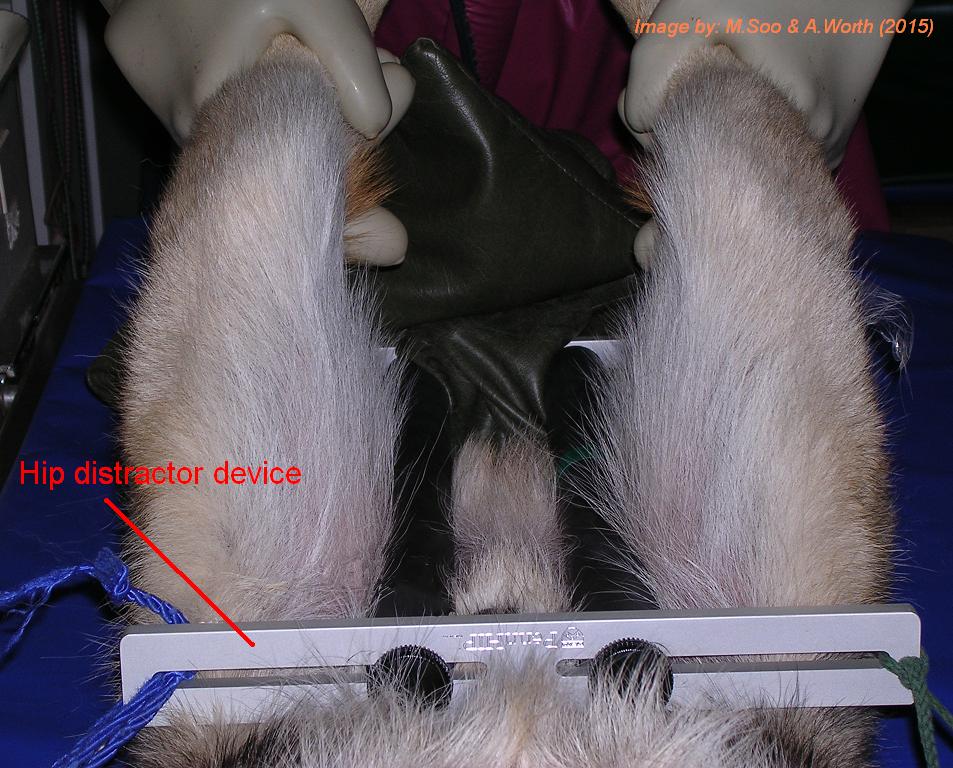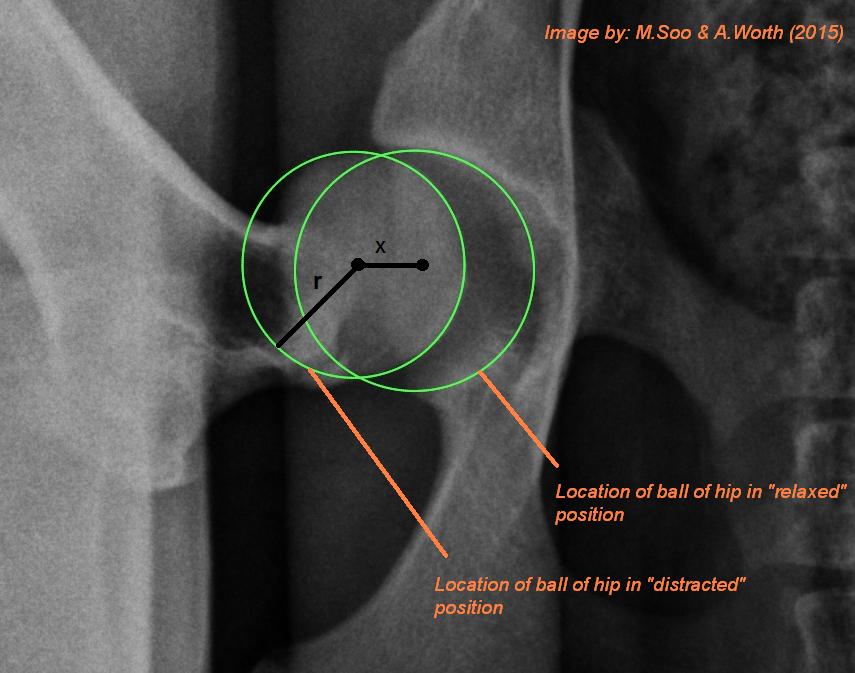

Hip Dysplasia in Dogs
What is hip dysplasia?
How does hip dysplasia develop?
At birth, the puppy's original anatomical conformation of the hip joint and its surrounding structures are genetically pre-determined by its parents. But, the continued growth and development of the puppy's hip joint are synchronised and dependent on the joint congruency, the movement and balance of forces occuring across the hip joint. An alteration in any or all of these factors may affect or interfere with development of the hip joint.
Prior to 6 months of age, the dorsal acetabular rim (upper rim of the hip socket) in dogs is is mostly made up of cartilage and is very susceptible to deformation. Normally, the hip joint is stabilised by its joint capsule and the muscles surrounding the hip. In dogs with CHD, hip laxity is present - this means that the stabilising structures fail to restrain the femoral head (ball of the hip) within the acetabulum (hip socket). Therefore, when the puppy is moving around and weight-bearing, the femoral head moves out of the acetabulum, causing an abnormal concentration of forces on the dorsal acetabular rim. Over time, this causes the joint cartilage to wear out and alters the composition of the joint fluid such that osteoarthritis eventually develops. These changes further destabilise the hip joint, sometimes even causing subluxation (partial dislocation) or complete luxation (full dislocation) of the affected hip joint.
Several factors that have been implicated in predisposing or causing a genetically-susceptible puppy to develop CHD in adulthood. These include, but are not limited to:-
- Abnormal pelvic muscle mass
- Spasms or contracture of the pectineus muscle (a muscle in the thigh)
- Hormonal influence (e.g. relaxin and/or oestrogen)
- Synovial fluid volume and osmolality (composition of the joint fluid)
- Nutrition
- Rate of weight gain
- Overexercise in the skeletally-immature animal
Diagnosis of hip dysplasia
As CHD has a multifactorial mode of inheritance (see above), it is unlikely that a simple genetic screening test will be developed in the near future to identify susceptible dogs. Therefore, in order to objectively quantify CHD, several radiological (x-ray) scoring/grading methods have been developed in an attempt to identify dogs affected with this condition.


Worried your dog may have hip dysplasia?
If you are concerned that your pet may have hip dysplasia, please phone us on (06) 3588675 to book them in for an appointment with our team of experienced veterinarians.
The above information is provided for educational purposes only and not intended or implied to be a substitute for professional veterinary medical advice, diagnosis or treatment; and should not be relied on solely as veterinary advice.
Parts of this pet health article is based on Soo M & Worth AJ (2015). Canine hip dysplasia: Phenotypic scoring and the role of estimated breeding value analysis. New Zealand Veterinary Journal 63(2), 69-78. Read the full article here.